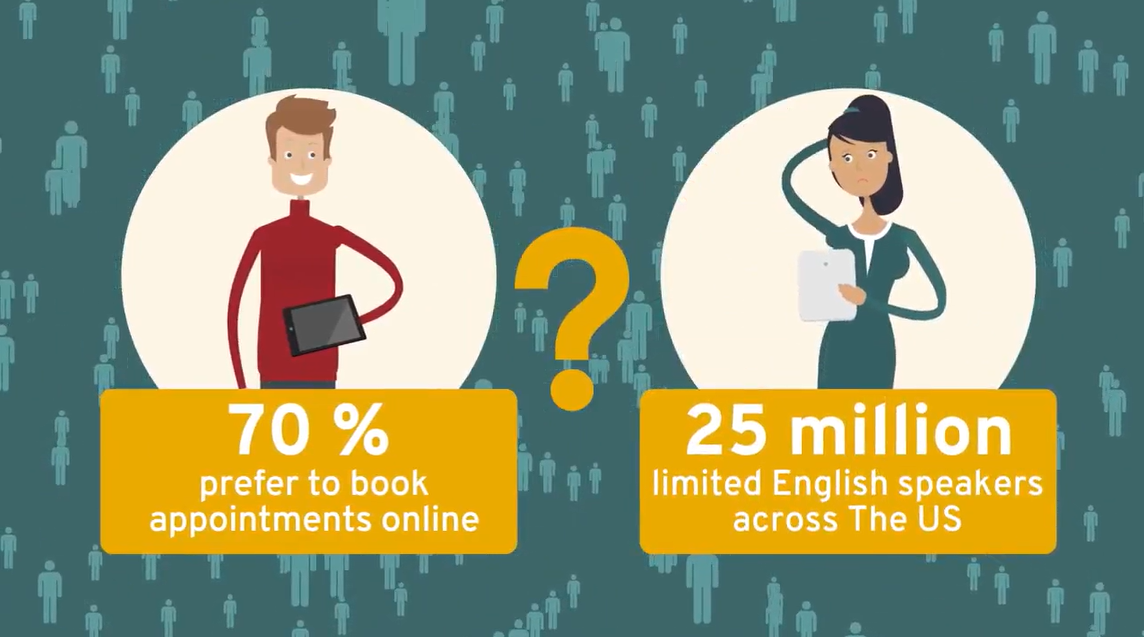How to Provide Digital-First Multicultural Healthcare
From researching doctors and hospitals to booking appointments, more people than ever are starting their healthcare journey online. The need for digital resources doesn’t stop there, either. Existing patients benefit from provider websites with patient portals, which offer access to health records, test results, and more.
Yet language barriers make it difficult for patients with limited English proficiency (LEP) to access these resources. However, healthcare organizations can ensure multilingual patients receive the support they need through a combination of website localization, translation, remote and interpreting.
Developing Culturally-Relevant Experiences with Localization
Given their diverse backgrounds, LEP speakers have differing views about healthcare. Simply translating web content into another language may fail to take this into account. That’s why we recommend a process known as website localization, which involves adapting cultural elements in addition to translation.
Localization may include:
- Coding a website to properly render special characters.
- Adding culturally-relevant information.
- Changing images, graphics, and design elements to reflect cultural norms.
A linguistically and culturally-relevant website not only gives LEP speakers access to online resources, but can also help build trust between patients and their providers.
Making Patient Education Accessible Through Translation

While translation is an essential part of website localization, other patient materials—both online and off—may need to be translated as well. Office signs, patient forms, and treatment instructions are just a few materials you may want to provide in multiple languages. This makes it easier for LEP patients to navigate the healthcare system and participate in their own care.
Although the accuracy of machine translation has improved in recent years, human translators are still better at providing accurate, culturally-relevant translations that meet regulations. A language service provider (LSP) that specializes in healthcare can ensure that all of your translations meet those requirements.
Providing Language Support with Remote Interpretation
LEP patients often experience poorer health outcomes due, in part, to poor patient-provider communication. Language barriers make it difficult for patients to express their needs and understand treatment recommendations. While bilingual staff and onsite medical interpreters typically bridge this gap, they may not always be available. Fortunately, remote interpreting options make it possible to connect with a medical interpreter at any time.
There are two types of remote interpreting: video remote interpreting (VRI) and over-the-phone interpreting (OPI). Each has its benefits.
VRI works well for:
- Office visits.
- Telemedicine appointments.
- Emergency care.
OPI works well for:
- Scheduling appointments.
- Providing registration assistance.
- Billing questions.
- Appeals and grievances.
Most LSPs offer remote interpreting services and can even advise you on which method will best meet your needs.
Working with Avantpage
As you can see, website localization, translation, and interpreting work together to provide LEP patients with the resources and support they need. While this process may sound complex, an LSP that specializes in healthcare can help you develop experiences that let patients move seamlessly through the healthcare journey.
By partnering with Avantpage, you’ll benefit from our expertise in healthcare—as well as our localization, translation, and interpreting services. We specialize in working with organizations that serve LEP communities, and know how to help you address their unique needs.
Ready to discuss your multilingual project? Contact us today.
Want to learn more about how localization, translation, and remote interpreting can improve multicultural patient care? Download our white paper Digital-First Multicultural Healthcare: Improving Language Access Through Localization, Translation, and Interpreting.